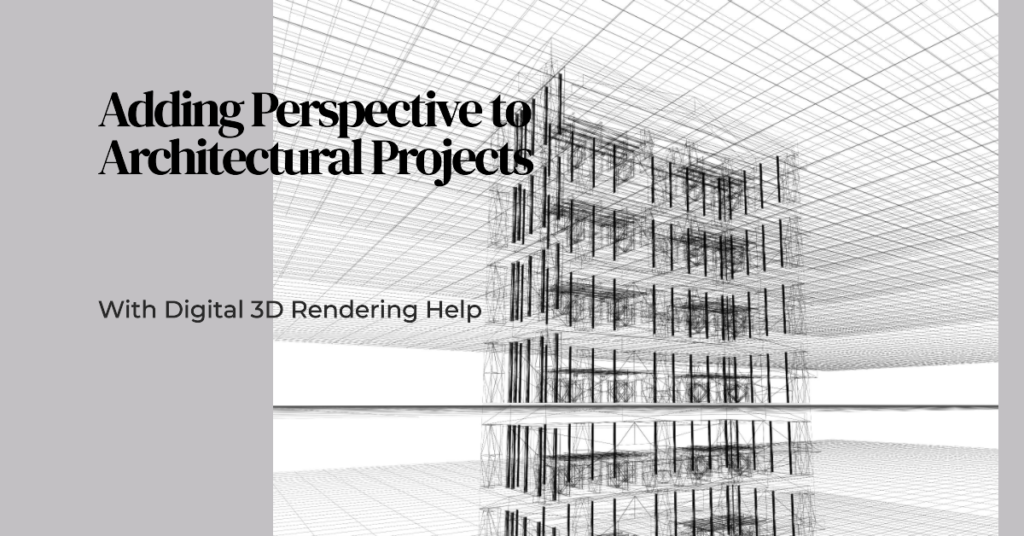
Table of Contents
Introduction to 3D Rendering:
3D Rendering help – In the realm of architectural design, conveying ideas and concepts with clarity and precision is paramount. One tool that has revolutionized this process is digital 3D rendering. With its ability to add depth, realism, and perspective to architectural projects, digital rendering has become an indispensable asset for architects, designers, and clients alike. In this blog post, we will explore the various ways in which digital 3D rendering can elevate architectural projects, providing insight into its benefits and practical applications.
The Power of Visual Representation:
In the world of architecture, the ability to visualize designs is crucial. Digital 3D rendering serves as a powerful medium for bringing architectural concepts to life in a way that traditional 2D drawings simply cannot match. By harnessing the latest software and rendering techniques, architects can create photorealistic images and immersive virtual environments that offer a glimpse into the future of their projects.
Moreover, digital rendering allows for easy manipulation and experimentation with different design elements. Architects can quickly iterate on ideas, adjusting lighting, materials, and spatial arrangements with precision. This flexibility not only streamlines the design process but also enables architects to explore innovative solutions and push the boundaries of creativity.
Enhancing Communication and Collaboration
Enhancing Communication and Collaboration: Effective communication is at the heart of successful architectural projects. Digital 3D rendering facilitates clear and concise communication between architects, clients, and other stakeholders by providing visual representations that everyone can easily understand. Whether presenting ideas to clients or collaborating with fellow professionals, rendered images and animations serve as powerful communication tools, fostering greater understanding and consensus.
Furthermore, digital rendering transcends language barriers, making it an invaluable asset for international projects where stakeholders may come from diverse cultural backgrounds. By presenting designs in a visually compelling manner, architects can ensure that their ideas resonate with audiences around the globe, fostering stronger relationships and partnerships.
Realism and Immersion
Realism and Immersion: One of the most significant advantages of digital 3D rendering is its ability to create immersive experiences that allow viewers to envision themselves within the proposed architectural space. By incorporating realistic textures, lighting effects, and spatial configurations, rendered images and animations evoke a sense of realism that traditional drawings cannot replicate.
This level of realism not only helps clients better understand the scale and proportion of a project but also allows them to experience the intended atmosphere and ambiance. Whether designing a residential property, commercial complex, or public space, architects can use digital rendering to evoke emotional responses and create memorable experiences for users.


Contextual Integration
Contextual Integration: Architecture does not exist in isolation; it is influenced by its surroundings and context. Digital 3D rendering enables architects to seamlessly integrate their designs into existing environments, allowing clients and stakeholders to visualize how proposed projects will interact with surrounding buildings, landscapes, and infrastructure.
By incorporating accurate site data and environmental factors into their renderings, architects can demonstrate how their designs respond to specific challenges such as topography, sunlight, and urban density. This contextual integration not only enhances the realism of rendered images but also ensures that architectural projects are sensitive to their surroundings and contribute positively to the built environment.
Time and Cost Savings
Time and Cost Savings: In addition to its aesthetic and communicative benefits, digital 3D rendering offers practical advantages in terms of time and cost savings. Unlike traditional methods such as physical modeling or hand-drawn sketches, digital rendering can be produced quickly and efficiently using specialized software and hardware.
By reducing the need for physical prototypes and iterative revisions, architects can accelerate the design process and bring projects to completion faster. This not only translates into cost savings for clients but also allows architects to allocate more time and resources to exploring design options and refining their concepts.
Adaptability and Flexibility
Adaptability and Flexibility: Architecture is a dynamic field that constantly evolves in response to changing trends, technologies, and client preferences. Digital 3D rendering offers architects the adaptability and flexibility they need to stay ahead of the curve and meet the demands of a rapidly evolving industry.
Whether experimenting with new building materials, exploring sustainable design strategies, or incorporating cutting-edge technologies, architects can use digital rendering to visualize and evaluate their ideas in real-time. This iterative approach to design allows architects to stay agile and responsive, ensuring that their projects remain relevant and competitive in a fast-paced market.
Accessibility and Inclusivity
Accessibility and Inclusivity: In recent years, there has been a growing emphasis on accessibility and inclusivity in architectural design. Digital 3D rendering plays a crucial role in this regard by providing architects with tools to create environments that are welcoming and inclusive to people of all abilities.
By simulating accessibility features such as ramps, elevators, and tactile signage, architects can ensure that their designs meet the needs of individuals with disabilities and mobility challenges. Moreover, digital rendering allows architects to explore universal design principles that benefit everyone, regardless of age, gender, or physical ability.
Environmental Impact and Sustainability
Environmental Impact and Sustainability: As concerns about climate change and environmental sustainability continue to grow, architects are increasingly turning to digital 3D rendering to explore green building strategies and minimize the environmental impact of their projects.
By simulating energy-efficient design features such as passive solar heating, natural ventilation, and green roofs, architects can optimize building performance and reduce carbon emissions. Additionally, digital rendering allows architects to conduct virtual simulations and analysis to identify potential areas for improvement and optimize resource utilization throughout the design process.
Conclusion: Shaping the Future of Architecture
Conclusion: Shaping the Future of Architecture: In conclusion, digital 3D rendering represents a transformative tool that is reshaping the way architects conceptualize, communicate, and realize their visions. From enhancing visual representation and communication to fostering realism and immersion, digital rendering offers a multitude of benefits that empower architects to push the boundaries of creativity and innovation.
As technology continues to advance and new rendering techniques emerge, the potential for digital rendering to influence the future of architecture is virtually limitless. By embracing this powerful tool and harnessing its capabilities to their fullest extent, architects can create spaces that inspire, engage, and enrich the lives of people around the world.



